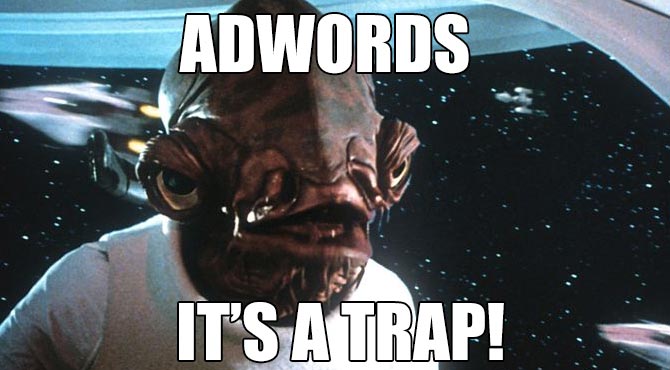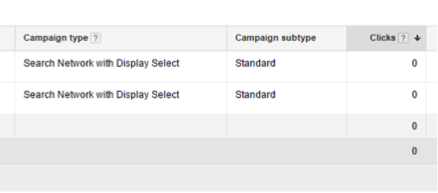
AdWords is easy to use and accessible to all! Anyone with a computer screen and a credit card can get up one morning and say, “Let’s go! I’m gonna use AdWords and make a ton of money!”
Then, after a while, you come to the realization that AdWords has easily plowed through your daily budget, and even allowed itself to slightly exceed your budget, leaving you with nothing in return (well, almost nothing!)
There are many pitfalls or “traps” in AdWords, some fatal for the poor beginner who must count every dollar. Here are some tips to get you started on the right foot.
# 1 Separate campaigns on the Google search network and campaigns on the Display network
First off, what’s the difference?
Search Network: Google search bar
Display Network : Advertisements that appear on websites in the advertising spaces for this purpose.
So, if you see this indication on your campaigns … not good! Change it immediately to ‘search network’ only.
The trap: by default, AdWords will create your campaign including these 2 options, while Google suggests separating these two types of campaigns! This can prove to be a bottomless pit, as you can see in the example that my client recently experienced:
As you can see, the ads on the Display network have certainly generated clicks, but 83.08% of these visits have bounced and only 2.28% of visits were converted into leads. Suppose that the CPC (cost per click) is $ 1, then the total campaign cost was $ 1,271.
So, 83.08% of the budget has gone down the drain, or $ 1,056. Finally, the campaign generated 28 leads, which means that each lead costs $ 45.39 (vs. about $30 for paid search (search network)).
I’ll leave the management of advertising on the display network for a later blog post. For now, let’s focus on the search network only.
#2 Using negative keywords
Let’s say you sell Head tennis equipment (this is a totally fictional example). Conscious that you are about to offer head on the internet, you may become concerned about appearing in say,umm, irrelevant searches. You would have to go to the keywords tab, under Keywords to exclude. This is where you can insert the keywords you don’t want your products to appear under. I’ll let you be expert on that subject (nudge-nudge, wink-wink).
#3 Check your search terms regularly
Along the way, it is possible to see which search terms Google has deemed fit to boost your ad. Click on the tab nearby called, “search terms.”
Here, it’s easy to remove terms that have no relevance to your company. Regularly look at these search terms, especially early in the campaign; this will save you a lot of your budget in the long run!
With an AdWords campaign focused on selling Head, you will soon notice that the Web is overflowing with wildly imaginative people who have all sorts of ideas about what to do with their equipment…
#4 Keywords – be as specific as possible and stay away from large or vague terms
Let’s continue with our exemple :
| Don’t do this | Do this |
| Head | +Head +rackets
+Head +tennis +equipment +Head +tennis +rackets +Head +pro+rackets +Head +pro +shoes +purchase+Head+pro+shoes |
Oh, look at that! What is the ‘+’ in front of the keywords? This is actually a combination between the exact phrase and a broad match. The “+” in front of the keyword tells Google that that term must be present in the search, whether in its exact form or in a variant that comes close to it.
#5 Landing page – be specific!
The beginner’s reflex is to point their campaign to the home page … big mistake! Create a specific web page for your campaign. Remember and repeat this mantra: “create the most accurate campaign possible”. To believe that a lazy web surfer will actually do the work of searching through your site is unrealistic.
| Don’t do this | Do this | ||
| AdWords campaign | Landing Page | AdWords campaign | Landing Page |
| Head | Your website’s landing page | Head tennis rackets | Head rackets |
| Gift for father’s day | Your website’s landing page | Head tennis shoes | Head shoes |
Try starting out your campaign with the above tips. They will certainly help you keep from blowing your wad (of AdWords money).






